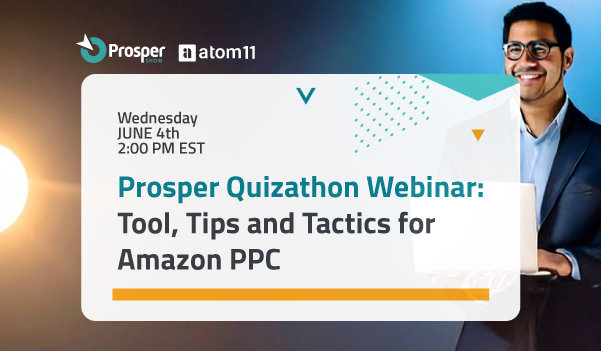Reaching the ceiling of success as an Amazon Seller leaves many looking for what can be done to push to through to new heights. But where to start?
One often overlooked place is by first ensuring you have the right mix of infrastructure — technology, applications, and a plan on how they all connect and work together.
The first step is to make sure you have a solid core that serves as your business’ central point of truth. While it’s possible to run your entire Amazon business off a stand-in like an Excel spreadsheet or Quickbooks and the Amazon portal, this approach will not help your business breakthrough to new heights on Amazon — or any other channel.
Once your business reaches certain thresholds, you simply need something more robust. Attempting to hold on to technology you’ve outgrown is a great way to stifle growth, and at the very worst, set yourself up for significant issues down the road. As you grow on Amazon, the complexity in your back-end will compound. You may be growing from an Amazon Seller into an Amazon Vendor, and juggling both B2C and B2B. With more channels comes more dashboards and ecosystems to manage, and higher demands on your business in terms of delivery and quality — data included. If you have a poor stand-in as the ‘brains’ of your business that allows for errors, slowness, and inconsistencies in how you’re delivering information into these Amazon channels, you’re going to run into trouble sooner or later.
Instead, businesses looking to expand their presence on Amazon need to set up key infrastructure before welcoming additional complexity. In fact, setting up core systems like an ERP before adding in complexity has great advantages on its own. Things move quickly — from orders, to shipments and beyond — whether using Amazon as your exclusive sales channel or if it’s one of many. From accuracy in inventory and better cost control, increased visibility and business intelligence, it is best to instil control while things are still relatively simple!
Implementing an ERP
Many Amazon businesses start small with spreadsheets and the portal. The business takes off and they graduate to an Order Management System (OMS) that may or may not have a semblance of inventory control. If it doesn’t, they add on an inventory management solution. Typically the Order Management System is tied to an external accounting system with a direct integration. The overall system is limited, just as the basic accounting system is limited. As a business scales, this becomes less and less efficient as there is no central point of truth all these systems are placeholders for data in their own right. In an ERP, all your business’ data is centralized, there are no external applications doing inventory management, accounting and shipping. Having everything centralized provides for greater visibility and control and allows the business to efficiently scale.
Technology in the omnichannel world is continuously evolving; even if you find the right technology solution to solve problem x today, the vertical is likely to be evolving so quickly that better single-feature solutions will be introduced tomorrow. (This is currently happening with PIMs.) By having the central point of truth and then adding on non core components, your infrastructure will be built to last. Core functions should be: order management, inventory management, and accounting. PIMs, shipping and others are often are part of an ERP, but can be better served by function-specific solutions.
If you can find a great strategic consulting/strategy partner, you may alleviate some change-related and application selection stress, but you should still be your own advocate. Never hand the responsibility of an empowered decision away; stay informed. A simple litmus test on whether you’re adequately empowered and informed? If you’re making price-first decisions, you’re abdicating control of key decisions for your business.
Connect It All Together In An Agile Way
And this brings us to the final — and in some ways, most important — piece of growing your Amazon business. Because ecommerce and omnichannel commerce is evolving at a blinding rate, you need to ensure that you’re keeping your business flexible and agile to change. And this can almost be completely distilled down to how you choose to integrate your applications.
As a growing business, complexity will only deepen across all of these areas. And as you grow, you can expect more volume, more sales, and more data.
Changing, adding, or modifying technology can have severe impacts on how your applications’ data is connected together. If you do the heavy lifting in putting together the best technology stack possible for your business but go cheap on your integration strategy, you’ll pay the price in reduced agility. Plug-and-play integrations put all businesses that use them into the same box, and that box is rarely built for growing businesses. DIY or hard/custom-coded integrations are inflexible to growth and change, and may seem ideal at the outset but are often expensive to maintain, unless, on rare occasion, you have a skilled internal team to manage this for you.
Ideally, you should seek out an integration solution that matches core business strategy and needs. This comes down to really knowing your business in order to formulate your own list of integration requirements. This helps to not only empower your decision, but also educates you on your own needs, helping you avoid being pressured into an ill-fitted solution or focusing on price alone.
So do a diagnostic on your business: Does this data need to move in real time? What workflows are you looking to automate? Do you need business rules applied directly to data transformations? Are you looking to connect applications in a one-to-one structure, or one-to-many? These questions and others will help you understand what solution your business is really looking for.
In Summary
Expanding and growing your Amazon business can be a complex but rewarding endeavour, especially if you do work in advance in ensuring your business is ready for the growth.
But this methodology is also applicable to single-channel businesses looking to take their Amazon success to other channels, too! If you find you’re using workarounds, undersized technology solutions, or are getting hit with penalty fees time after time, your business strategy likely could use some of the elements discussed in this article, whether you’re planning on staying exclusively Amazon or thinking about growing into other channels.
It all boils down to this: in order to stay on top in a highly competitive Amazon and multichannel world, you have to keep your business agile. And part of being agile is understanding what your business needs today, and tomorrow, and being your own advocate on your business’ journey throughout.
Want to learn more about how to build a great, agile business?
Attend Robin H. Smith’s talk at Prosper Show 2018.
VL OMNI: Agile and scalable SaaS data integration.
Accelerate Growth with VL OMNI: Your trusted integration platform for real-time accurate customer order data, shipment details, inventory, and prices. VL OMNI is an agile point to multi-channel data integration service. Over 200 businesses trust VL OMNI to move data seamlessly through their infrastructure as they grow, expand and accelerate their business.
* * * * * * * * * * * * * * * * * * * * * * * * * * * * * * * * * * * * * * * * * * * * * * * * * * * * * * * * * * * * * * * * * * * * * *
If you enjoyed this content, consider joining us at PROSPER Show, March 13-14, 2018 at the Las Vegas Convention Center.




Recent Comments